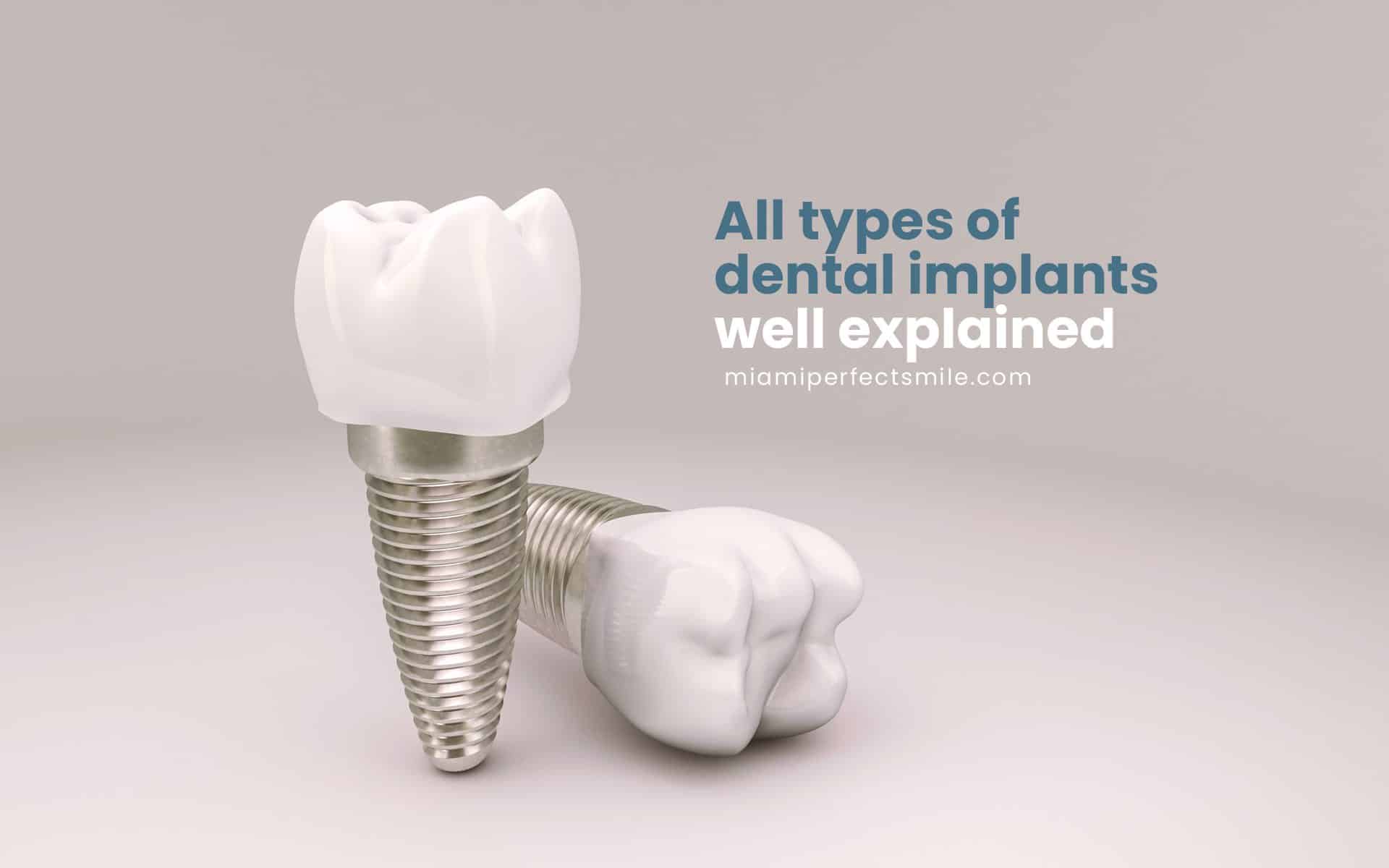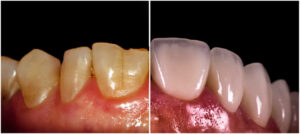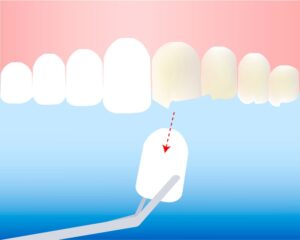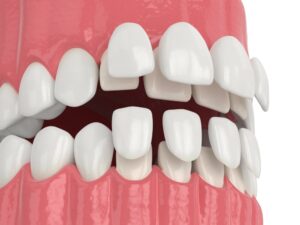In this article, we will analyze in detail all the types of dental implants that exist and are used today, from the traditional ones to the most innovative or latest generation. It is worth taking a deep look at what has undoubtedly been one of the most successful dental treatments of all time. The combination between the great effectiveness of the procedure and the almost indestructible materials, makes some dentists give a lifetime guarantee for the treatment of dental implants.
There are several criteria to classify the types of dental implants, and here we will delve into the most used because they are the most important. As always, you can trust the information that we will be providing you because for all the conclusions we have carried out research, less online and more in specialized, medical and dental publications. We will also give you links to scientific studies on these topics, so you can delve into the content that most interests you.
Miami Perfect Smile: the best prices for dental implants in Miami
If you are looking for dental implant treatment in Miami, you have just come to the right place. We have everything you need to make your smile look like you dreamed of: perfect but natural, radiant but elegant, renewed but yours. We offer you dental veneer treatments, smile design, all types of dental implants, and others. By following the link we just inserted, you can access our contact information, schedule your first appointment and find out all the details.
Our treatments are carried out with the highest quality materials and state-of-the-art technology, to make your smile look perfectly natural. Your well-being is our goal. In our facilities, you will receive the careful and specialized treatment that you deserve. Review the opinions of our patients and check their high degree of satisfaction with our treatments. Satisfied patients are our best letter of introduction.

At Miami Perfect Smile we accept all types of insurance and plans with which the patient is covered. And one of the most important: our prices are very reasonable. You can investigate, and you will see the excellent quality/price ratio that we offer you. It is worth noting that many people travel to Florida to undergo dental implant treatment in Miami. Despite the travel costs, our prices are still more reasonable than in other US states.
Importance of the classification of the types of dental implants
There are multiple criteria, approaches, or points of view to group the types of dental implants. The ways of classifying dental implants are not a mere example of the desire for taxonomies. These classifications have their importance in treatment. For example, the best-known classification criteria for types of dental implants are probably the materials with which they are made. This classification allows dental implant materials and their characteristics to be available, to choose one or the other in patients with certain allergies to materials.
Another of the best-known classifications by types of dental implants is the one established from the point of view of the implantation position with respect to the bone, whether inside or outside the maxillary or mandibular bone or in other positions. Although the development of implantology has determined that the most frequent implantation position is, by far, intraosseous (within the bone), the classification of implantation positions keeps other possibilities open for patients who, not having enough bone in the area, require another position.
We comment on all this so that, in some way, the usefulness of the different classification criteria of the types of dental implants is understood. Of course, there are dental implant classifications that are more useful than others, but each has its uses.
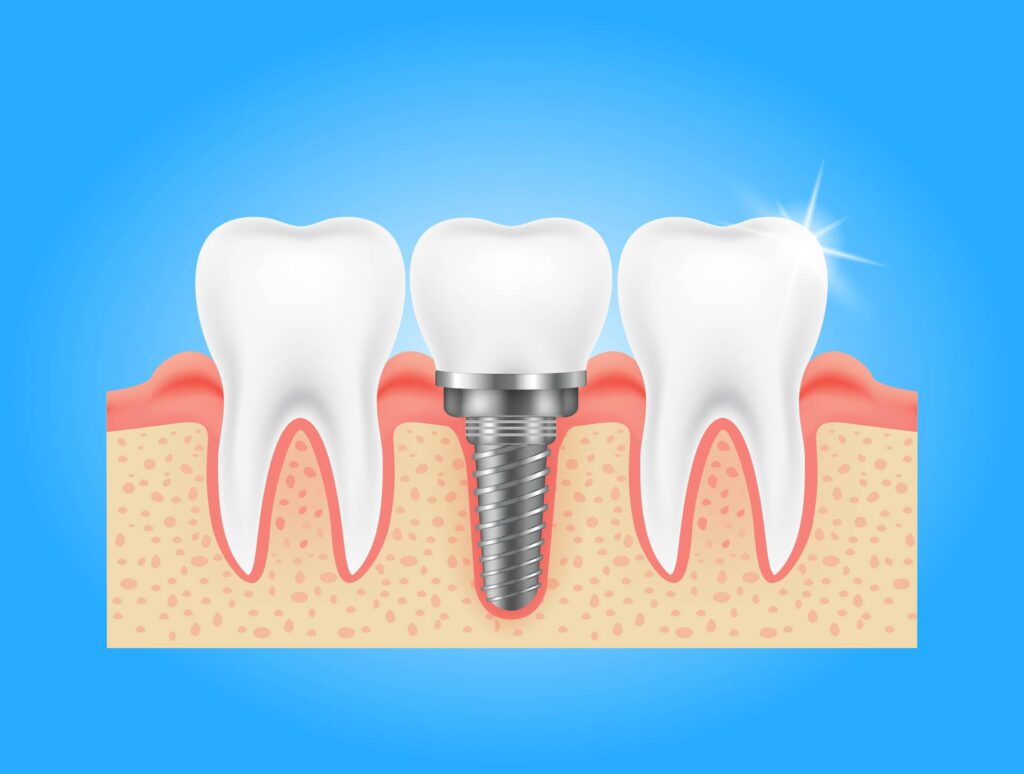
Different criteria to classify the types of dental implants
Dental implants are under continuous research, and that is not in vain. Its degree of effectiveness is so great that the specialists themselves assert that it has become the standard procedure for the recovery of teeth in adults. This means that, in cases of need to recover oral functionality, treatment with dental implants is considered first, and if it is not appropriate (either because the patient is not a good candidate for implants, or for purely economic reasons), then other treatments are considered.
There are some classifications of types of dental implants that, in practice, are more important or substantial than others. But in the theoretical and investigative fields, they are all of great importance. As we have already mentioned, possibly the two most important classification criteria are the material with which the implants are made, and the position they occupy in the bone once they are placed. That is why we will dedicate considerably more space to these two classifications, although we will talk a little about the others.
1) Depending on the material they are made of
The point of view of its material is by far the best known of the criteria for classifying the types of dental implants. Outside of specialized circles, most people believe that this is the only classification criteria for dental implants. This can be verified when the term “types of dental implants” is googled. Apart from the information published on websites specialized in medical and scientific research, the vast majority of articles on the subject online use the typical phrase “there are two types of dental implants: metallic and ceramic”.
The truth is that this is only a classification point of view of types of dental implants, although it is true that it is the most practical and widespread. The importance of classifying the types of dental implants according to their material lies in the fact that, since it is necessary to insert the implant into the bone, osseointegration must be guaranteed, that is, the integration of the implant material with the bone tissue of the mandible or maxilla. Not all materials allow such a complex biochemical operation. Materials are required to meet certain characteristics, such as:
- To be extremely hard and resistant.
- That their great hardness does not imply that they weigh more, but that they are light.
- Have a very low percentage of oxidation, even in the long term.
- Be biocompatible, that is, has a tendency to integrate into human tissues.
- Be bioinert, that is, not cause biochemical reactions in the short or long term.
- Being highly hygienic, in the sense of not accumulating dirt or bacteria.

Thus, with so many specific parameters, the ideal materials to manufacture dental implants are never many. From the point of view of their manufacturing material, there are 2 main types of dental implants, already mentioned:
a) Metallic (titanium) implants
They are almost always made from pure titanium, although they can also be alloys of titanium with other metals. Titanium metal implants are characterized by their great resistance combined with remarkable lightness, low density and elegant finish. They achieve very good osseointegration (integration with the bone) once they are implanted in the maxillary or mandibular bone.
Titanium dental implants have been used for more than 40 years, and they are certainly the most used until today. Approximately 95% of implants placed today are made of titanium. However, it must be said that some people are allergic to this metal or to metals in general. That is why it is convenient to have another material, which is not metal.
b) Ceramic implants (zirconium and other materials)
So-called ceramic implants are made from ceramic materials, or from so-called “transition metals”. Transition metals have some of the properties of metals, but not all. In addition to being hypoallergenic, they are exceptionally hard, without losing their lightness and low density. This guarantees safety and comfort when using them, thanks to the fact that they are highly resistant, but not heavy.
Ceramic implants are very often manufactured in zirconium (zirconium or zirconia), but also in hydroxylapatite and monocrystalline aluminum oxide. More than osseointegration, they achieve what is called bio integration, that is: a much more complete integration into human bone tissue. This material is of more recent use in the manufacture of implants and is also used in other variants of dental treatments, such as veneers or crowns.
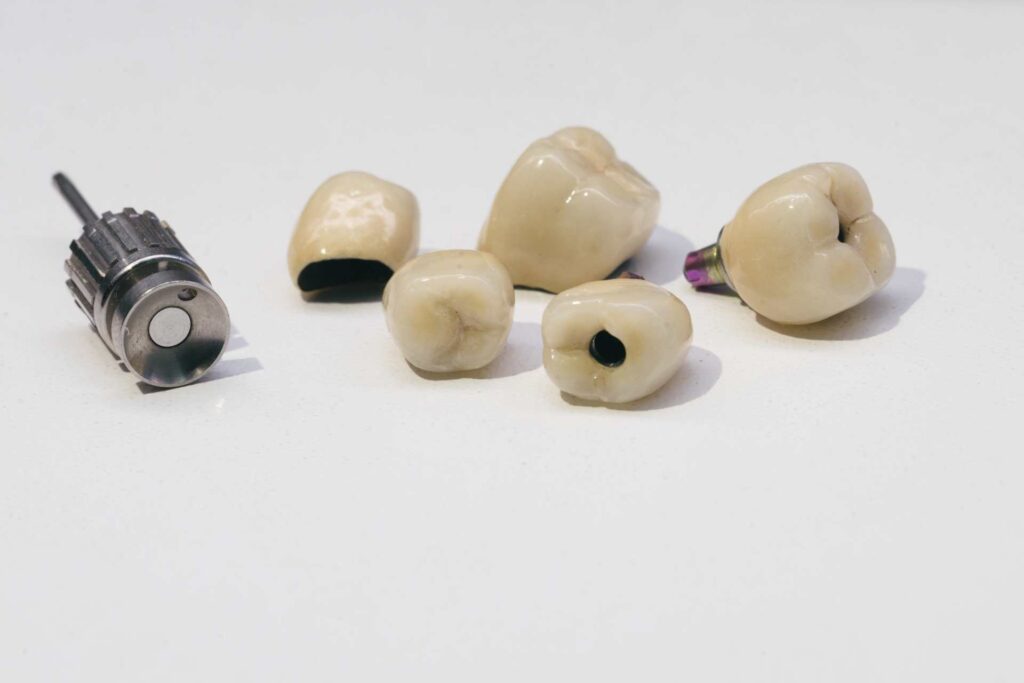
Approximately 5% of the implants that are placed are made of zirconium. It is the ideal material for people allergic to titanium implants. The white color of zirconium is very similar to that of natural teeth, which is why prostheses made of this material are very aesthetic. This is not so important in the case of intraosseous implants, because they are not visible. Importantly, zirconium implants have exceptional durability with a normal level of care.
Titanium or zirconium implants: which are better?
Both materials used in the manufacture of dental implants, metal (titanium) and ceramic (zirconium), meet the qualities of being hard, resistant, light, non-oxidizable, hypoallergenic, biocompatible and bioinert. In other words, they do not cause secondary reactions when integrated into the organism of the vast majority of human beings. One is not better than the other. Titanium has been used countless times for 40 years, but since its recent emergence zirconium is used more and more.
Despite the bioinert quality of both titanium and zirconium, it is extremely important to have these two varieties of materials for the manufacture of dental implants. Patients with allergies to metals or titanium should use ceramic dental implants, especially zirconium. This avoids long-term complications, as well as prevents problems of lack of osseointegration due to allergy or implant failure, in the sense that the body is unable to integrate or assimilate the implant material.
If you are interested in delving into the topic of osseointegration and bio integration, you can read these medical articles:
- Comparison of osseointegration in areas grafted with different osteoconductive biomaterials. preclinical study
- The Influence of Haematogenous Bone Marrow on the Early Osseointegration of a Titanium Implant which Penetrates the Endosteum
2) According to the place of implantation with respect to the bone
The types of dental implants can also be grouped from other points of view, in addition to their manufacturing material. After the classification according to its material (one of the most important criteria when choosing which implants will be placed in the patient), the most significant criterion is the position that the implant will have with respect to the maxillary or mandibular bone.
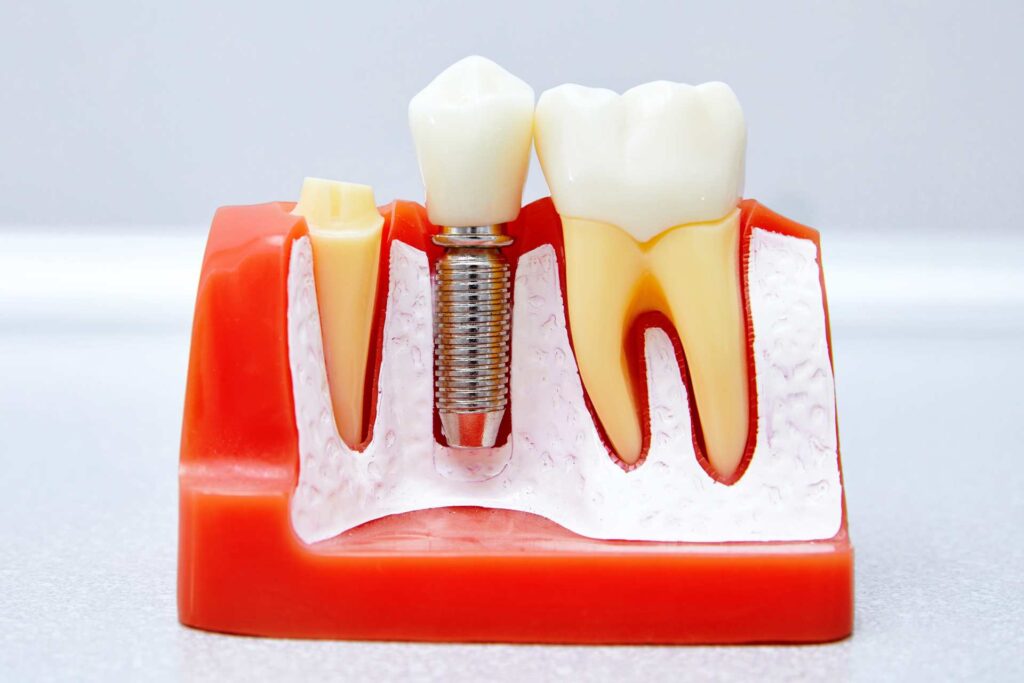
Let’s see below, and following the order of their appearance in time, the three main types of dental implants from the point of view of their position with respect to the bone: juxtaosseous, intraosseous, and immediate loading.
a) Juxtaosseous dental implants (subperiosteal or ISP, subcrestal or fibrointegrated)
This type of implant is the first to become widespread during the times when implantology was emerging. They were used frequently before intraosseous implants appeared, which we will see later and which are much more effective. Juxtaosseous implants, which are increasingly falling into disuse (although it cannot be said that they are no longer used), are placed between the maxillary bone and the gingival tissue. Hence its name juxtaosseous, which means ‘attached to the bone’ but not within it.
Their advantage has been that thanks to their design, they are capable of creating support to place dental prostheses in patients with little mandibular or maxillary bone, who would not tolerate intraosseous implants or ‘within the bone’. But since this can be solved today with the so-called transzygomatic implants (we will look at them later), the great disadvantages of juxtaosseous implants become more notable, namely:
- Its placement requires complex surgery, large wounds, and long recovery periods.
- Its material, a chrome-molybdenum alloy, is much less suitable than titanium or zirconium.
- Their degree of osseointegration is low, and they very often cause infections and bone damage.
- They have a low durability index, the lowest compared to other types of dental implants.
b) Intraosseous or endosseous dental implants
These are by far the most widely used types of dental implants today. Their level of success is remarkable, and a large percentage of the research carried out each year regarding implants is about them. Their most outstanding characteristic, which gives them the name intraosseous or endosseous, is that they are fixed within the maxillary or mandibular bone (as appropriate).
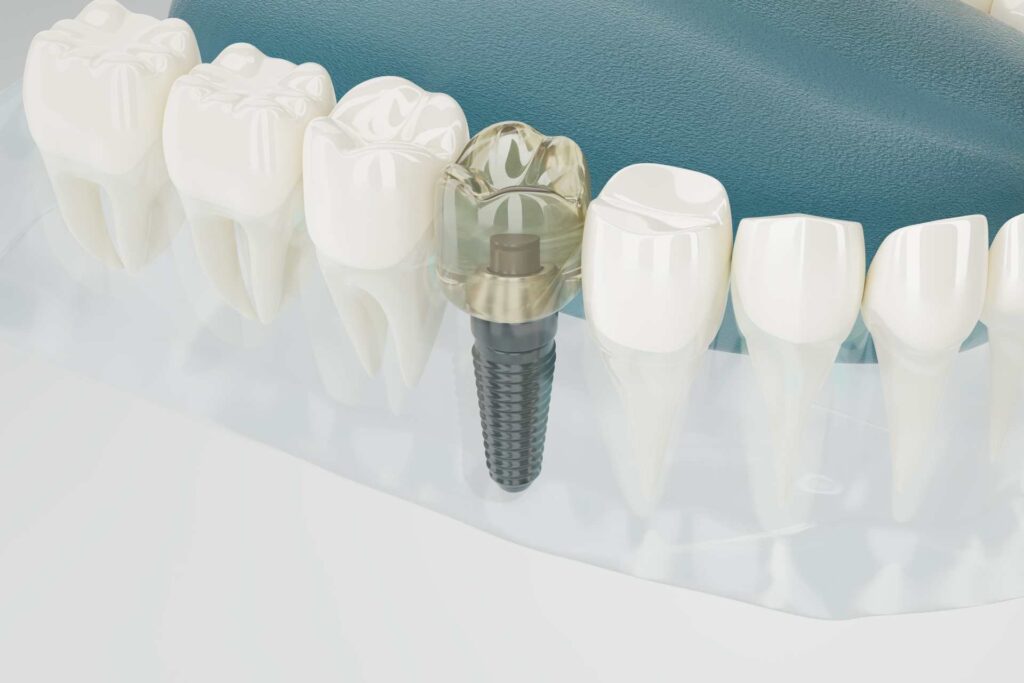
To place intraosseous implants, an incision is first made in the gum, and then the implant is inserted into the bone. The method of fixing the implant to the bone can be cementation, but it is much more common to use the threaded or screwed route. That is why these implants have the appearance of a thick screw that tapers towards the tip. The hole that includes the implant for the placement of the pillar that will support the crown, is also usually threaded, but internal.
After this procedure of incision of the gum and the insertion of the implant, a healing time of the wound is required (between 1 and 2 weeks), plus a waiting time of between 8 and 15 weeks approximately. During this time, the implant must osseointegrate with the bone tissue, so that it is ready to place the crown or dental prosthesis.
c) Immediate loading dental implants
It is a relatively recent type of dental implant, still subject to research and many transformations. Due to this, its use is not widespread and there is not much information on the subject. This type of implant includes all the benefits of intraosseous implants but eliminates the waiting time between the placement of the implant and the crown or dental prosthesis.
Immediate loading dental implants take their name from the remarkable fact that both the implant and the crown are placed in a single day. In these treatments, the dental implant is placed, and immediately afterward the crown is placed. This represents a huge advantage over the multiple steps and duration of intraosseous implant treatment, which requires a gap of several weeks between implant placement and subsequent dental crown placement.
To place this type of implant, an incision is not made in the gum or any other surgical intervention, but the implant is inserted directly into the bone through an open hole in the gum. This avoids complicating or lengthening the treatment with an incision, which then requires a healing time, and which can even increase the costs of the treatment.

Despite the method and thanks to the elongated and extremely thin design of the implant, it remains out of sight and inside the gum, just as in the case of intraosseous implants. An essential condition for choosing this type of implant and not another is that the patient has healthy gums and no infections of any kind, as well as maxillary or mandibular bone with abundant volume.
If you want to know more details about immediate loading dental implants, we recommend you read an article published in SciELO. It is entitled Immediate loading in dental implants and is signed by C. Concejo Cútoli and N. Montesdeoca García, from the Department of Oral and Maxillofacial Surgery of the University of Navarra.
3) Other classification criteria for the types of dental implants
- According to the mode of connection with the bone: From the point of view of their way of connecting the implant to the bone and the crown abutment to the implant, they can be screw-retained or cement-retained implants.
- According to their degree of inclination: From this point of view, dental implants can be straight or inclined (at an angle). The objective of angled implants is to overcome the difficulties that certain mandibular or maxillary bones with little volume may present.
- According to its shape or design: From the point of view of its shape, the types of dental implants can be conical or cylindrical.
- Depending on their connection: Internal connection or external connection dental implants.
- According to their fixation: From the point of view of their permanence, they can be fixed or removable dental implants.
- According to the number of implants together: From the point of view of the number in which they are placed, the types of dental implants can be the simple one, the “ all on four ” and “ all on six ”. These last two consist of the placement of complete dental prostheses in totally edentulous patients, but only on four or six dental implants.

Some details about transzygomatic intraosseous implants
Within the classification of the types of intraosseous or endosseous dental implants, we must comment on a subtype that constitutes a whole new technique. We refer to the so-called “transzygomatic implants”, which are a way of approaching the bone by a different route than the traditional ones, and which allow patients with little maxillary bone to successfully receive dental implant treatment.
The term “transzygomatic” is derived from the so-called zygomatic bones (also called “malar bones”). The zygomatic bones are the cranial bones of the outermost part of the face, which make up the cheekbones and a part of the orbit of the eyes. Transzygomatic implant surgery is performed specifically through the anterior zygomatic bones, which are the outermost, the ones that are just below the cheekbones, and give them shape.
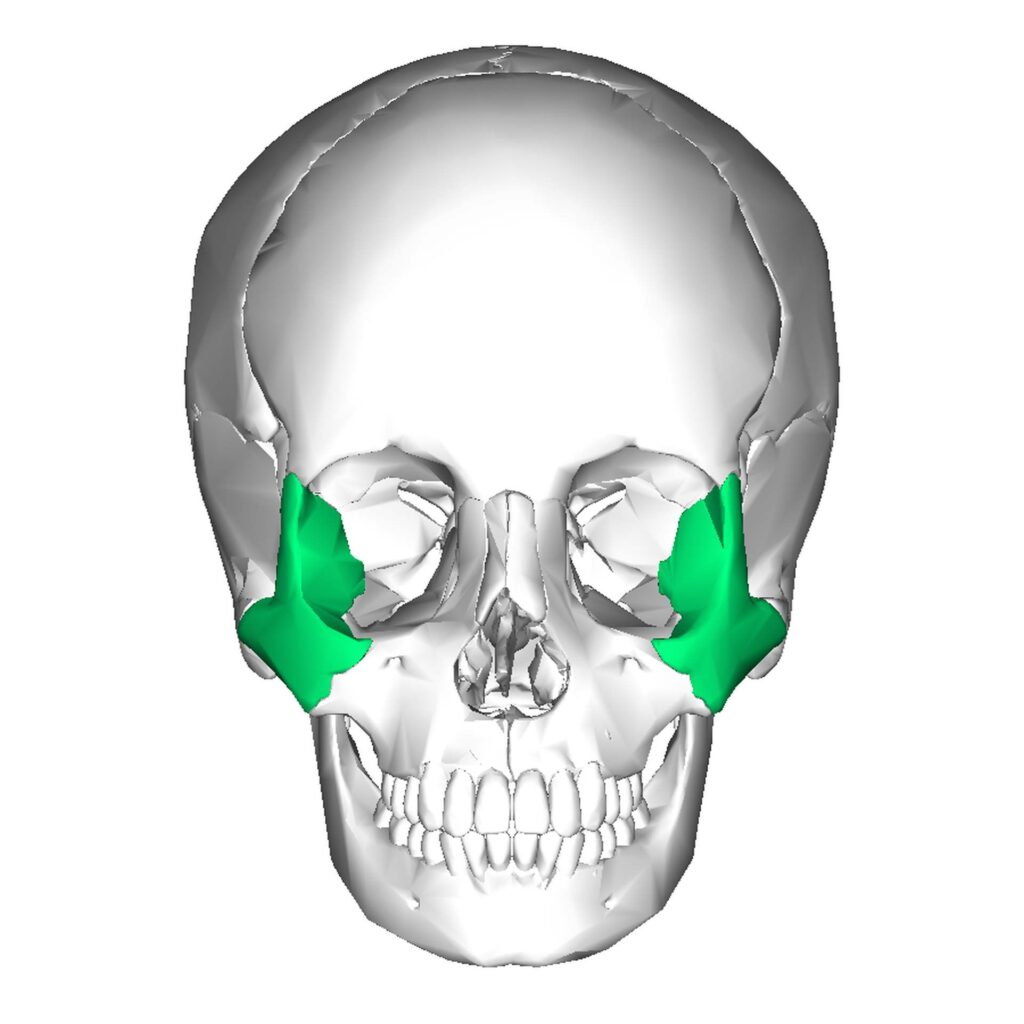
The zygomatic bone (rather we should say “the zygomatic bones”, because it is a paired bone) articulates below with the maxilla, so it presents advantageous possibilities for dental implant processes of the upper jaw or maxilla, especially in cases where the maxillary bone, for some reason, is not sufficient by itself to support other types of implants.
Zygomatic or transzygomatic implants are specially designed to be used in cases of maxillary atrophy or very reduced or malformed maxillary bone, or severe trauma. When there is the little volume in the maxillary bone, the placement of any of the other types of dental implants becomes impossible. That is why it is said that transzygomatic implants are a new possibility for patients who until recently were not good candidates for dental implants even though they needed them.
Importance of titanium within the types of dental implants
Titanium has been called “the metal of the future”. Although it was discovered at the end of the 18th century, it was not until recent decades that it reached its peak and, thanks to it, impressive advances were made in many areas of science and technology, including medical science and implantology. Its name, “titanium”, refers to the titans of Greek mythology, who are the oldest and strongest gods, who gave the structure and the original impulse to the world and to humanity (for example: Prometheus and fire, Atlas and the sky, Crono and time).
Its remarkable physical-chemical qualities (it has the highest hardness-to-density ratio of all metallic elements and is extremely resistant to corrosion), as well as its great versatility (it is prone to successful alloying with many metals), make it an element which is suitable for very specialized applications. To this, we must add its abundance on the earth’s surface, and its relatively easy mining process. The high availability of material always determines its suitability.
You can learn many details about the history of dental implants, and specifically about the evolution of metal dental implants, if you read these two articles: History of Dental Implants and A Brief Review on the evolution of Metallic Dental Implants : History , Design, and Application .
For the vast majority of patients (read: for people who are not allergic to titanium), the compatibility between titanium as a biocompatible metal and human bone tissue is such that this metal is used not only for dental implants. Other bones also receive reconstructive partial implants. There are so-called titanium bone endoprostheses, which are large portions of bone replaced by titanium implants.
An example of what we have just discussed is the fact that an entire part of the mandibular bone can be reconstructed and implanted in patients who have suffered some severe trauma. This procedure is called mandibular titanium stent implant surgery. Osteosynthesis between human bone tissue and titanium has been extensively studied. If you are interested in this topic, you can read this interesting medical article published in SciELO: Maxillofacial osteosynthesis with titanium ( Maxillofacial osteosynthesis with titanium ) , by the Spanish oral and maxillofacial surgeon S. Martínez-Villalobos Castillo.
We know that metal allergy, and specifically titanium allergy, can be an important issue for some patients who have it and still need implants. That is why we give you this link to an interesting medical study on negative reactions to titanium in certain patients: Emerging titanium surface modifications: The war against polymicrobial infections on dental implants.
In brief: what are implants and other details
Dental implants are fixations that are surgically placed in the maxillary (upper) or mandibular (lower) bones, with the aim of replacing the lost roots of teeth. Implants are literally replacements for tooth roots, so they create a new root so that a dental prosthesis can be placed where it could not be put before.
Currently, the implant is inserted into the bone mainly by threading, but there are also implants that are placed by cementation. Once the implant is placed, it takes several weeks (from 8 to 16) before placing the dental prosthesis or crown on it. Strictly speaking, the implant is only the root placed by surgery. But the set of root, abutment, and dental prosthesis is often called a dental implant.
One of the most common implants, the threaded insertion intraosseous implant, has, as we said above, the appearance of a relatively thick screw. The thinnest end of the implant (called the root or apical area) is rounded as much as possible, with the aim of achieving bone insertion without any type of trauma.
Dental implant procedure
Except for immediate loading implants, the dental implant procedure is based on a rather simple surgical intervention. This requires a prior study of the case, and a subsequent wait until the implant integrates with the bone and is ready to receive the crown or dental prosthesis. Let’s examine the entire procedure of the most common dental implants gathered in three steps:
- Previous study and planning of the procedure: To carry out the dental implant treatment, the patient’s medical history must be thoroughly reviewed, as well as the mandibular and maxillary bones, examined using X-rays and other types of technologies. This is done in order to decide what implant material will be used, what is the exact place where the implant will be inserted, or even to decide if the patient is a good candidate to have implants, based on a protocol that includes several conditions.
- Surgical intervention of the gum and placement of the implant: The patient is given anesthesia, usually local anesthesia (or general anesthesia in some cases). The incision is made in the gum, in a previously studied place. The implant is then inserted into the bone (maxillary or mandibular, as appropriate). In the place where the crown will later be placed, a “cap” is placed temporarily, to avoid the accumulation of dirt or infection.
- Placement of the crown on the implant: A dental implant is not complete without a crown, which is usually the final goal of treatment. To place the crown on the implant, you have to wait around 15 weeks for the implant to osseointegrate. For some patients, it may be less time, and for another, it may be more.
Do dental implants hurt?
This is a question that patients, and especially future dental implant patients, frequently ask: Do dental implants hurt? In general, we must answer that they hurt in a normal way. The surgical intervention itself to place the implants is pain-free because it is performed using local anesthesia. Some patients can even be put under general anesthesia. And people who are nervous or anxious about dental treatment of this type can also receive oral sedation.
After surgery, normal postoperative pain can be experienced, which can range from mild to episodes of some intensity, depending on the person’s pain threshold. However, to prevent this, dentists often prescribe pain relievers. If certain precautions with the diet are added to this (not eating hot, spicy, or hard foods, eating cold foods, following a soft diet, etc.), then the pain is minimized or disappears. After about 10 days or 14 days at most, the postoperative pain should disappear without a trace.
Regarding whether dental implants hurt during their daily use to chew, bite, eat, etc., it must be said that no, they do not hurt at all. Some patients even forget that they have dental implants because they are so comfortable. In any case, if there is a pain in these more advanced stages, it may be due to problems that the dentist should monitor. But normally there is no pain.
The risk from dental implants
As we have reiterated, dental implant treatment is considered one of the most successful of all time. Their success rate is around 98-99% of the time, which is exceptionally good. However, any dental procedure like that involves some degree of risk. Here is a concise list of the main risks from dental implants.
1) Recurring pain
The recurring pains are not the normal postoperative pains that we saw a little above. These are pains that persist beyond 15 days after the surgical intervention, when the wound has healed and even when the stitches have been removed. That is, they are pains that are out of the ordinary, because something has gone wrong during the operation. It is a symptom that should be reported to the dentist as soon as possible.
The causes may be: that the implant was too close to the dental nerve, that there is infection and inflammation of the tissue around the implant, that the alveolar nerve has been affected, etc. This can be remedied with antibiotics a posteriori or a priori.
In the article that you will find following this link, you can read details about the prophylactic use of antibiotics in dental implant surgeries: Antibiotic prophylaxis patterns of Finnish dentists performing dental implant surgery .
2) The dental implant touched the nerve and injured it
Lower dental nerve injuries may be due to a miscalculation during the planning of the surgical intervention for the placement of dental implants. This is one of the most frequent risks of such treatment. They can be the result of not having correctly calculated the path of the implant during planning, putting excessive pressure on the nerve during the intervention, or placing the implants excessively close to the dental nerve.
The most direct consequence of the implant touching the nerve is what is called “paresthesia”: an abnormal sensation in the skin due to problems in the nervous or circulatory system. The patient may feel numbness in that area of the mouth, as well as discomfort in the lip, chin, or jaw, tingling, burning, itching, prickling, burning, buzzing, unexplained cold, dryness of the oral mucosa, or reduction of saliva production.
The solutions for this could be: to reduce the inflammation (if the inflammation is the cause of the closeness between the nerve and the implant), or perhaps, in the worst case, to remove the implant and replace it with a shorter implant.
3) Chronic sinusitis
If peri-implantitis (inflammation of the tissue in contact with the implant) occurs at the maxillary level, this can lead to rhinitis or chronic sinusitis. This is difficult to diagnose because the inflammation will make it difficult for the patient to express the exact location of the pain. Diagnoses in these cases must be made by radiography. More details about peri-implantitis in the following article: Peri-Implantitis: Surgical vs Non- Surgical Treatment .
4) Gum problems
Gum disorders can result from the implant thread cap becoming loose or dislodged. In these cases, the implant, in contact with the gingival tissue, can cause peri-implantitis, and if it is not detected in time, the condition can worsen. It is an inflammation that must be reduced as soon as possible so that the implant does not lose its support of the bone.
5) Implant fracture
It is extremely rare for a dental implant to fracture. The materials (whether titanium or zirconium) are among the most resistant that exist, in addition to the fact that once placed, they will be protected within the bone.
However, in a very small percentage of cases, fractures can occur. Perhaps the cause is some behavior that the patient should avoid. For example, if the patient suffers from bruxism (the habit of grinding the teeth or compressing the jaws), this excessive and unnecessary pressure could fracture an implant.
Implant fractures can also occur in the long term due to material wear. This can be especially the case with implants placed in the back of the mouth, especially if there are distal extensions. In cases of implant fracture, the patient must urgently go to the dental clinic.
6) Implant failure
An implant failure consists of the implant not being able to fix itself in the maxillary or mandibular bone, that is, it never manages to osseointegrate (which does not necessarily imply that it becomes infected or painful). Implant failure is the extreme risk of a dental implant. It is something that, in the very few cases in which it occurs, occurs in the long term. These cases can have a solution if you go to the dental clinic on time.
Helpful links to dental implant research
The world of dental implants is in continuous research and development. Within a few months or within a very few years, the panorama of dental implants may have changed quite a bit, either due to the emergence of new procedures or new materials, even along the lines of nanotechnology. The amount of research on dental implants that can be found on major scientific and medical journal websites is amazing. Click or tap on any of the following links, and go check what we tell you:
- Articles about dental implants in Research Gate
- Articles about dental implants in Frontiers
- Articles on dental implants in the National Library of Medicine
- Dental Implant Articles at Taylor & Francis Group
Dental implants have been a resounding success and have proven themselves in practice for decades now. That is why they are researched so much and continuously improved. Despite the generally high cost, they are the choice of more and more people.
